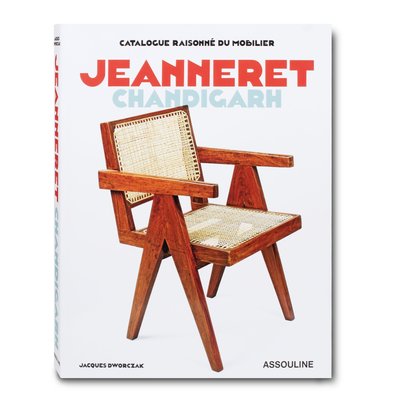Nous utilisons des cookies pour améliorer votre expérience. Pour nous conformer à la nouvelle directive sur la vie privée, nous devons demander votre consentement à l’utilisation de ces cookies. En savoir plus.
Catalogue Raisonné du Mobilier: Jeanneret Chandigarh (édition bilingue)
Assouline - EAN : 9781614286998
Édition papier
EAN : 9781614286998
Paru le : 1 févr. 2019
195,00 €
184,83 €
Disponible
Pour connaître votre prix et commander, identifiez-vous
Notre engagement qualité
-
 Livraison gratuite
Livraison gratuite
en France sans minimum
de commande -
 Manquants maintenus
Manquants maintenus
en commande
automatiquement -
 Un interlocuteur
Un interlocuteur
unique pour toutes
vos commandes -
 Toutes les licences
Toutes les licences
numériques du marché
au tarif éditeur -
 Assistance téléphonique
Assistance téléphonique
personalisée sur le
numérique -
 Service client
Service client
Du Lundi au vendredi
de 9h à 18h
- EAN13 : 9781614286998
- Editeur : Assouline
- Date Parution : 1 févr. 2019
- Disponibilite : Disponible
- Barème de remise : NS
- Nombre de pages : 350
- Format : H:370 mm L:300 mm E:40 mm
- Poids : 3.855kg
- Interdit de retour : Retour interdit
-
Résumé :
Upon India’s independence, Jawaharlal Nehru, the nation’s first Prime Minister, dreamed of “a new town, symbolic of the freedom of India …. an expression of the nation’s faith in the future.” Chandigarh, meaning “fortress of Chandi,” the Indian goddess of power, is the incarnation of Nehru’s vision. The construction of this municipality, the brainchild of renowned modernist architect Le Corbusier, born of his utopian dream of an avant-garde city, symbolized the determination of India to move forward into the contemporary world.
Instead of a “vertical city,” Chandigarh was organized as a horizontal grid with broad avenues, residential neighborhoods, green spaces, medical facilities, schools, temples, shops, sports grounds, and an artificial lake. Le Corbusier designed most of the infrastructure, highlighting large volumes through a bold use of raw concrete. Adapting his architectural plans to the regional climate, Le Corbusier provided protection against the sun and the monsoon rains while facilitating air circulation with vented shutters and large terraces. In close collaboration with his illustrious cousin, Pierre Jeanneret supervised the manufacture of numerous articles of furniture for public and private buildings, using wood from the forest-clearing necessitated by the vast undertaking.
Recently, record prices achieved at auction for these pieces have brought awareness of this great project and its creators to a broader public. Today, Indian leaders have become aware of the wealth of this great cultural heritage, and since January 2011 no furniture pieces can exit the country without permission of the authorities and the Ministry of Culture. This specialized catalogue raisonné sheds new light on this visionary urban project that is generating growing interest among design aficionados around the world. -
Biographie :
Interested in art objects and antiques from his earliest years, Jacques Dworczak became a renowned specialist and recognized expert in the field of naval artifacts. A passion for luxury ocean liners led him to India, where he discovered the somewhat forgotten treasure of Chandigarh, and this reoriented his career.
The innovative character of the architecture and the aesthetic boldness of the urban project captivated him, and he has never ceased to share his enthusiasm for this singular milestone of midcentury design. Over many years he has delved into archives and museums and also on-site research to offer a comprehensive overview of the prolific range of furniture created by Le Corbusier and his cousin, Pierre Jeanneret.

